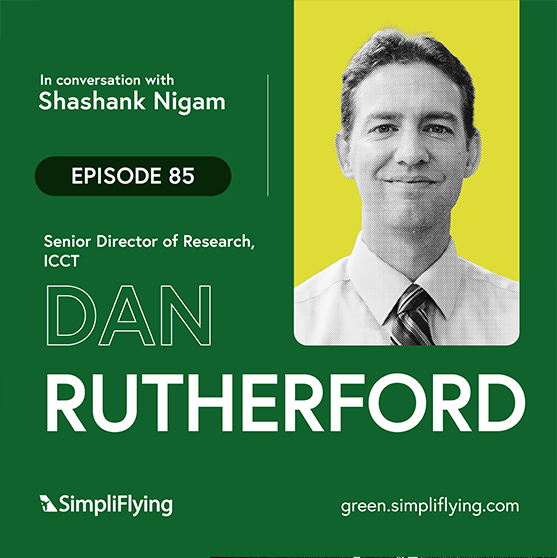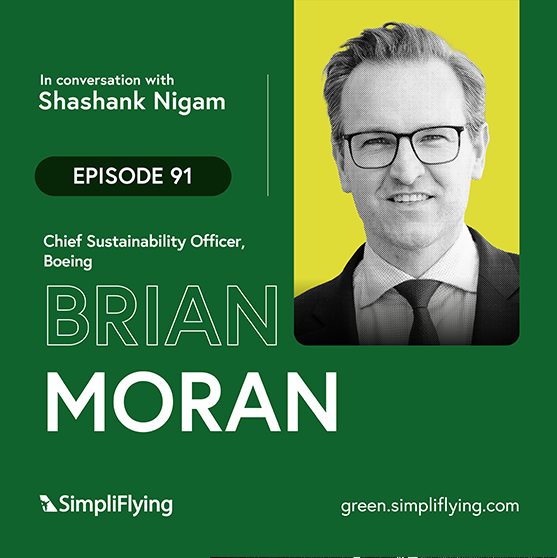What is Sustainable Aviation Fuel?
Explainer on the basics of SAF — a fuel that can cut aviation emissions by up to 80%, and works with today's aircraft.
Introduction to Alcohol-to-Jet (AtJ) SAF
Fundamentals of the Alcohol-to-Jet pathway of SAF production, which turns ethanol or isobutanol into jet fuel...
Understanding Sustainable Aviation in 40 Charts
Explore the current landscape of sustainable aviation through 40 insightful charts that highlight key trends...
SAF will contribute 80% of aviation's emissions reduction by 2050
Our knowledge hub explains how SAF can provide the bulk of the emissions reductions the industry will need to make by 2050.
Introduction to Alcohol-to-Jet (AtJ) SAF
The Alcohol-to-Jet (AtJ) process transforms ethanol or isobutanol into drop-in jet fuel through dehydration...
Understanding Sustainable Aviation in 40 Charts
Explore the current landscape of sustainable aviation through 40 insightful charts that highlight key trends...
02
SAF Knowledge Hub
Powered by Gevo, this platform brings together insights, data, and expert perspectives to accelerate the adoption of sustainable aviation fuel. From alcohol-to-jet innovation to policy, feedstock, and beyond — we’re making clean aviation possible today.
03
Your quick guide to SAF

What is Sustainable Aviation Fuel (SAF)?
SAF is a type of jet fuel made from sustainable feedstocks – not fossil fuels. It’s a “drop-in” fuel, meaning it works seamlessly with today’s aircraft and fueling systems, with no engine modifications needed.
- Chemically similar to regular jet fuel
- Certified safe for use in commercial aviation
- Reduces up to 80% greenhouse gas emissions over its lifecycle

How it’s made
SAF is made using certified technologies, each using different renewable materials and processes:
- HEFA – From used cooking oil and animal fats
- Alcohol-to-Jet (AtJ) – From alcohols like ethanol
- Fischer-Tropsch (FT) – From solid waste or plant material
- Catalytic Hydrothermolysis (CHJ) – From natural oils, using heat and water
- HH-SPK – From plant oils treated with hydrogen
- Synthesized Iso-Paraffins (SIP) – From plant sugars, blended at lower levels

What it’s made from
SAF feedstocks are renewable, diverse, and don’t compete with food crops.
- Waste oils & fats – e.g. used cooking oil
- Municipal solid waste – everyday trash
- Cellulosic waste – crop and forestry residues
- Cover crops – like camelina or pennycress grown between food crops
- Power-to-liquid inputs – CO₂ + renewable hydrogen
- Other sources – algae, jatropha, halophytes

Why it matters
It’s better for the planet – and built for the real world.
- Environmental – Up to 80% fewer lifecycle carbon emissions
- Practical – Compatible with today’s aircraft and fueling systems
- Economic – Supports rural economies and energy independence
- Essential – Expected to account for 65% of aviation’s CO₂ reductions by 2050
04
Spotlight: Gevo’s Alcohol-to-Jet technology
GEVO’s AtJ technology transforms renewable resources into SAF while enhancing food security and soil health
How it works
External benefits
Local economic benefits
Policy implications
How it works
The AtJ SAF process converts sugars from renewable crops like corn into sustainable aviation fuel. Along the way, it also produces high-protein animal feed and corn oil, captures CO₂ during fermentation, and is powered by renewable energy — helping reduce emissions across the supply chain.
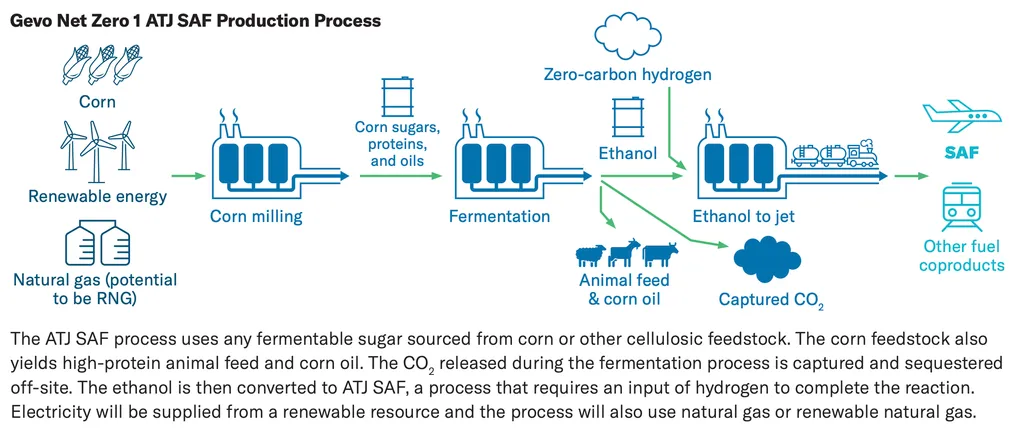
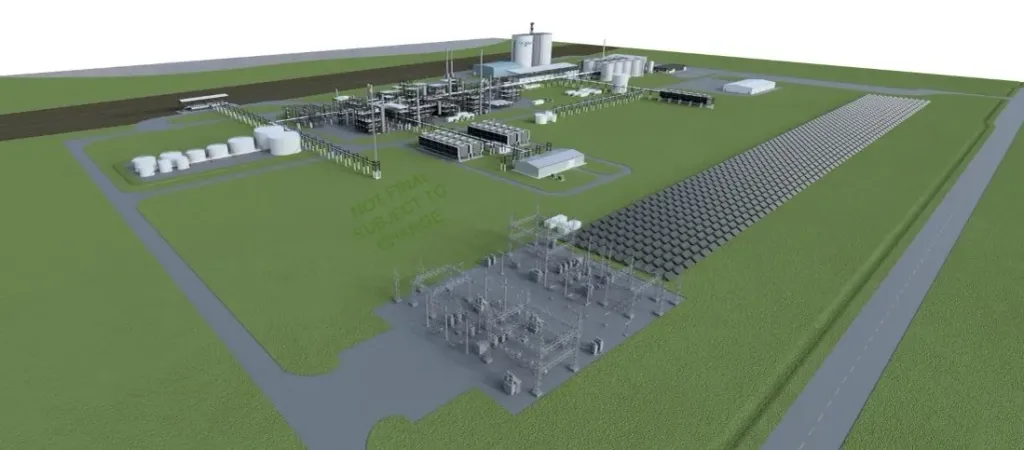
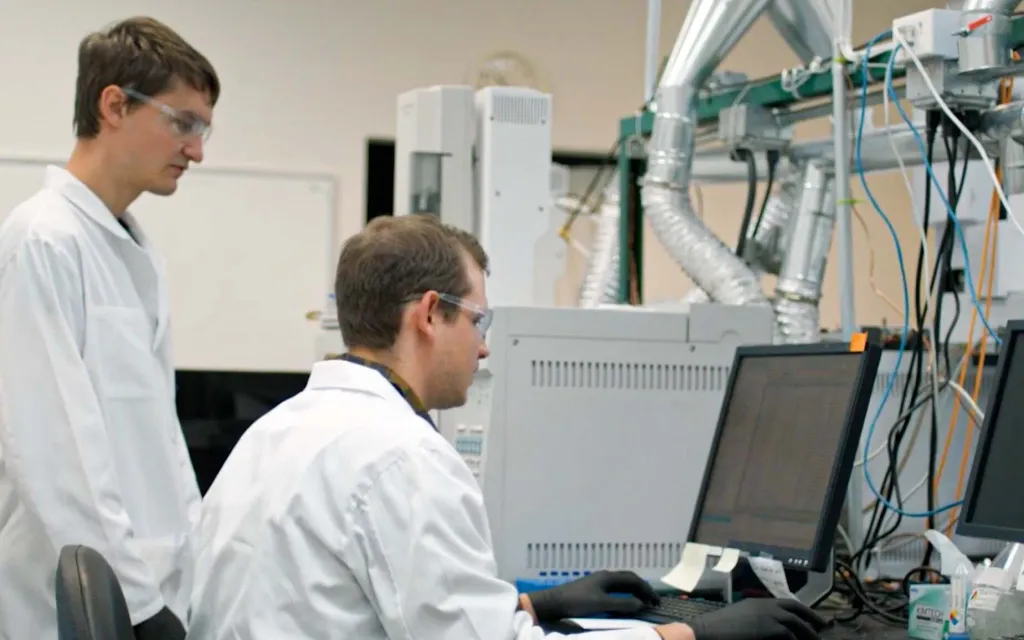
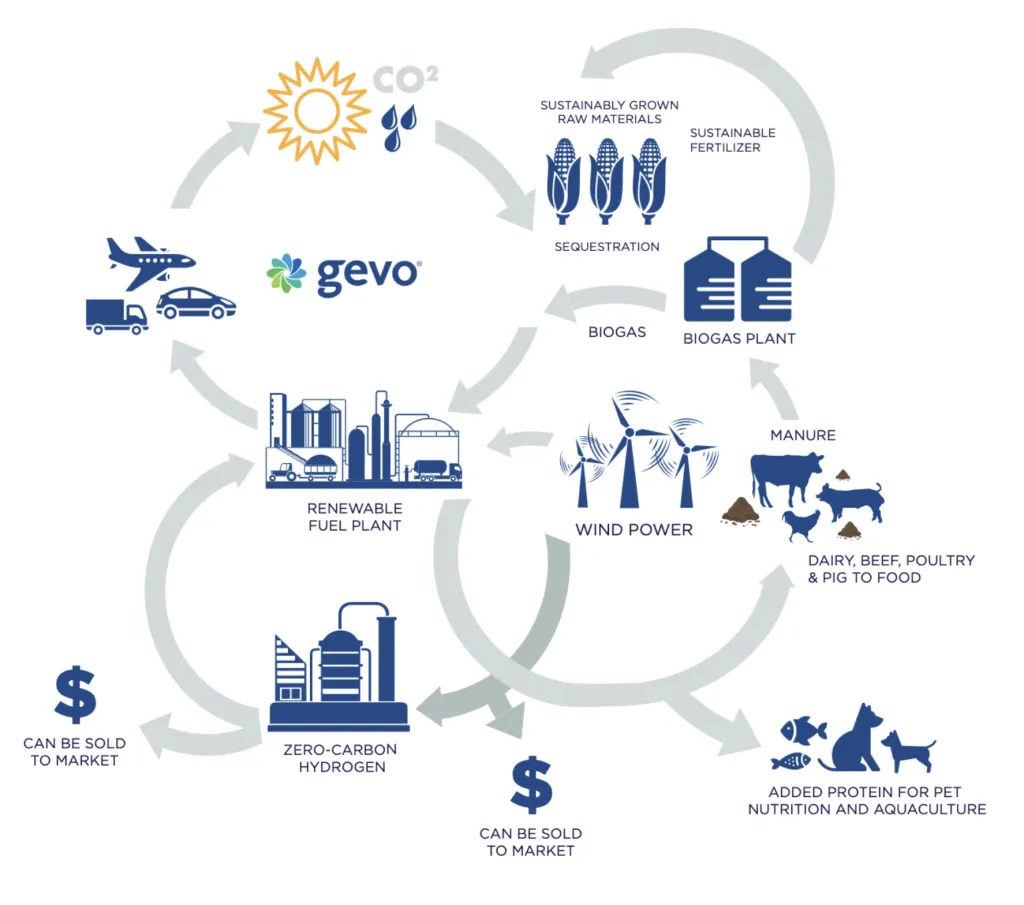




External benefits
Beyond emissions savings, AtJ can strengthen food systems and reduce dependency on fossil fuels. By generating valuable co-products and using existing agricultural supply chains, the process supports a more resilient, circular bioeconomy.








Local economic benefits
Gevo’s model supports rural communities and local farmers. By sourcing feedstock regionally and investing in long-term partnerships, the platform keeps economic value close to home — creating jobs and infrastructure in underinvested regions.








Policy implications
AtJ is a ready-now SAF pathway that can scale with the right incentives. Policies that support feedstock innovation, reward low-carbon intensity, and enable long-term offtake agreements will be key to unlocking its full potential — while strengthening domestic supply chains and advancing global goals.








05
Graphics & data
Visualise the impact of SAF
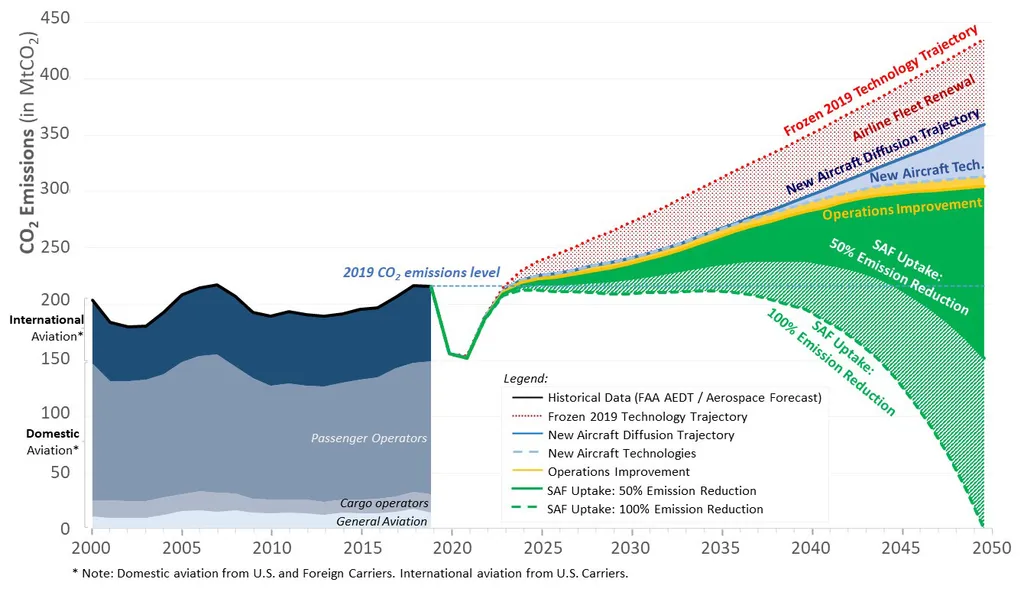
Source: FAA Climate Action Plan

Source: ATAG
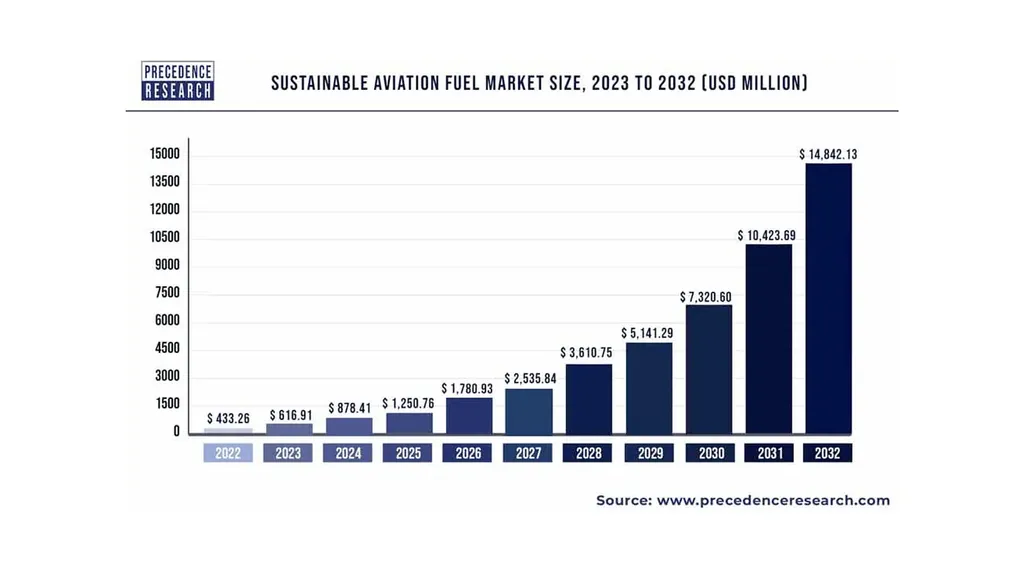
Source: precedenceresearch.com
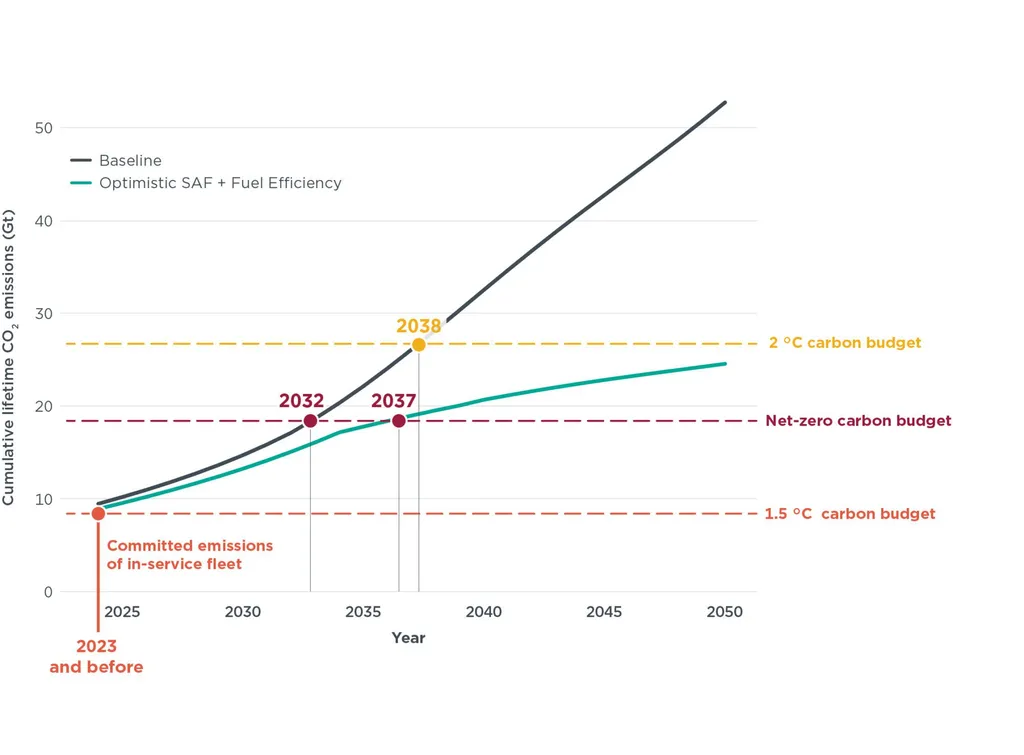
Source: ICCT

Source: FAA Climate Action Plan

Source: ATAG

Source: precedenceresearch.com

Source: ICCT

Source: FAA Climate Action Plan

Source: ATAG

Source: precedenceresearch.com

Source: ICCT
Next chart
06
Hear from the innovators
Dive deep into the
science of SAF
Dive deep into the science of SAF
Learn from experts how rapid development and
deployment of SAF can help decarbonise aviation.
Learn from experts how rapid development and deployment of SAF can help decarbonise aviation.
07
Whitepapers
Latest insights into the technical foundations, market
dynamics, and environmental impact of SAF
Latest insights into the technical foundations, market dynamics, and environmental impact of SAF
08
Events
Upcoming events where SAF takes center stage
May 2025
Business Travel Sustainability Summit Americas, New York
May 2025
Sustainable Aviation Futures Congress, Amsterdam
May 2025
IATA CNS Partnership Conference, Miami
May 2025
Carbon Management Americas Conference, Denver

Business Travel Sustainability Summit Americas
The BTN Group’s Annual Business Travel Sustainability Summit Americas is a one-day event focusing on advancements in policy adoption and actions taken by companies to align business travel with corporate objectives to increase sustainability practices.
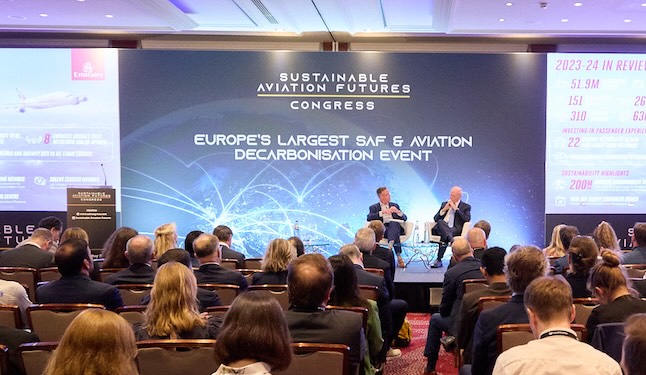
Sustainable Aviation Futures Congress
The Sustainable Aviation Futures Congress provides a structured, content-rich networking platform designed to connect all key players from across the SAF, aviation and energy value chain to define the scale-up of SAF, eFuels and aviation decarbonisation in Europe and beyond.

IATA CNS Partnership Conference
The CNS Partnership Conference is the premier networking event in the USA for the air cargo industry bringing together over 700 stakeholders and representatives from across the air cargo value chain, creating a forum for discussion and debate.

Carbon Management Americas Conference
As the energy industry grapples with the need for sustainable solutions, understanding these changes and identifying emerging opportunities is crucial for navigating the future of carbon management. The Carbon Management Americas Conference seeks to dissect these developments and explore the path forward.

